39 Interesting Facts About Ethiopia
Ethiopia is a mesmerising country located in the horn of Africa. This landlocked nation is one of the oldest worldwide, and its residents are proud of its vibrant heritage. Furthermore, this amazing country is home to the famous Blue Nile river, the fierce Dallol volcano, and the rugged Simien mountains.
Alongside the spectacular panoramas and intriguing traditions, there is deep requirement and suffering due to poverty. Ethiopia is the second-most populated nation in Africa and approximately 40% of its kids under the age of five experience childhood fighting from malnutrition.
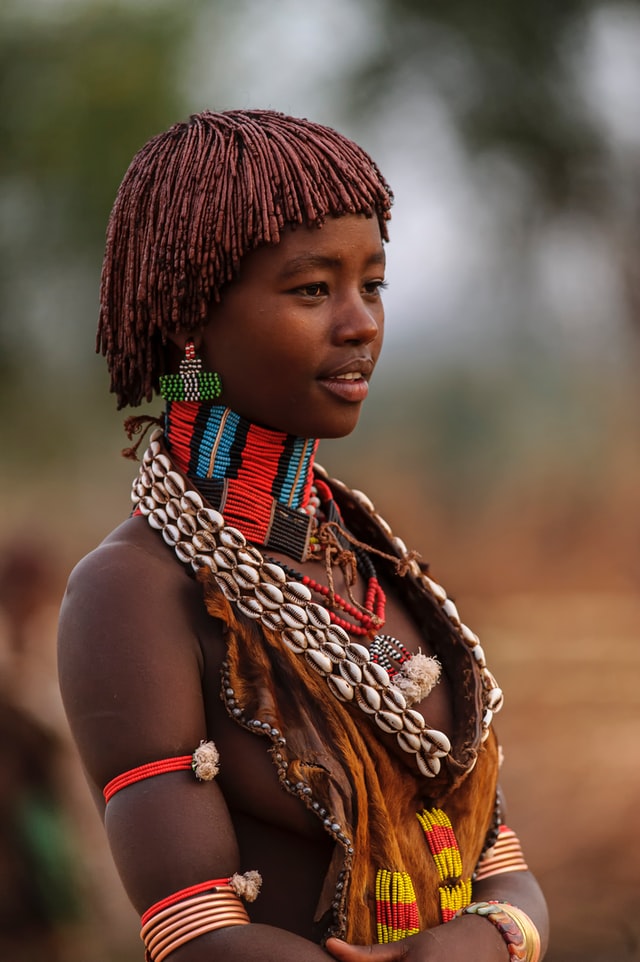
Keep reading below to learn some interesting facts about Ethiopia to understand its beautiful culture and traditions better.
Geography
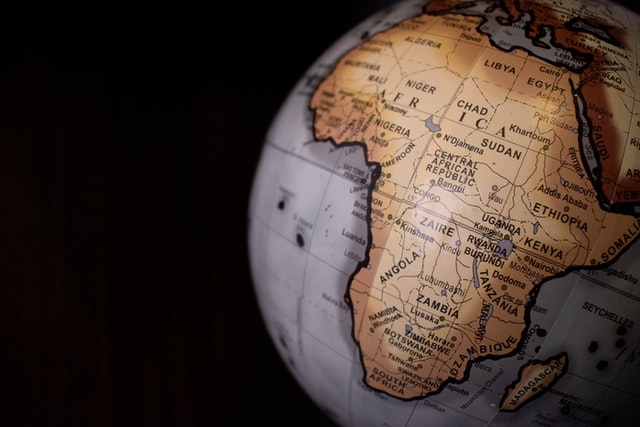
- Ethiopia is situated on the African continent in the east and a central position in the horn of Africa. Ethiopia is a landlocked nation with over 111 million in 2021. Its six adjacent lands are Somalia to the east, South Sudan and Sudan to the west, Eritrea to the north, Djibouti to the northeast, and Kenya to the south.

- Ethiopia is approximately twice as big as Texas in the USA or five times the measure of the United Kingdom. The nation entirely lies within the tropical stretches. Thus the lowlands maintain a desert or tropical savanna climate while the higher cliff plateau experiences a more moderate climate.
- Ethiopia partially remains situated on a high grassland with a prominent mountain crest separated by the Great Rift Valley. The country’s highest peak point is Mount Ras Dashen, with an altitude of 14,872 ft or 4,533 m.
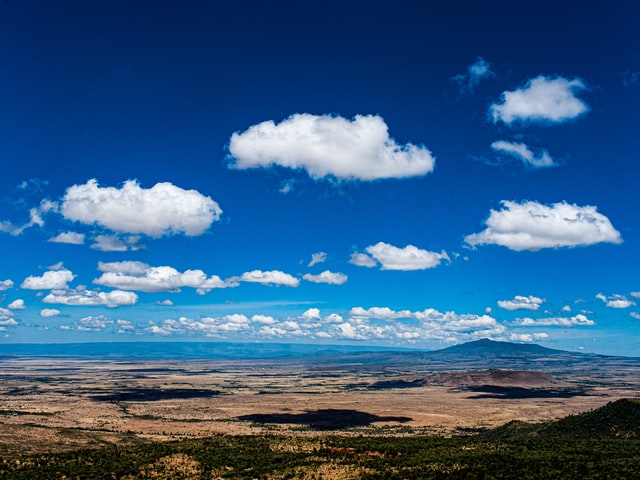
- The descending point in Ethiopia is the Danakil Depression, located 410 ft or 125 m below sea level. It is the hottest and most arid place on the earth, considering the average yearly temperature of over 46 °C or 116 °F!
- The Blue Nile, also known as Abay, is the longest river in Ethiopia that originates from Lake Tana and has a length of 2,574 m or 8,444 ft.
- There are about eight UNESCO world heritage locations in Ethiopia, with the Lalibela rock-hewn churches and Simien national park being the oldest recognized heritage areas in the country.
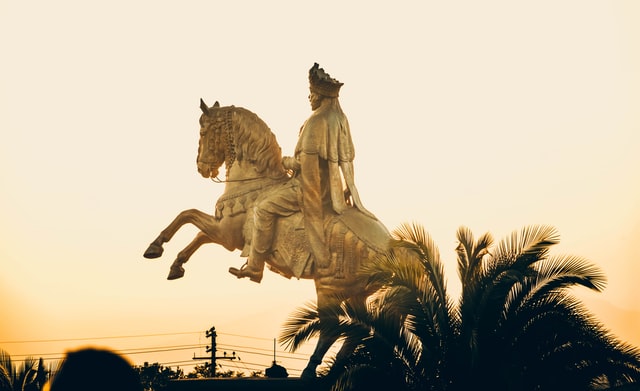
- The rocky churches are likely the most popular attraction in Ethiopia. Here around eleven mediaeval churches were carved and engraved out of rock. These churches are said to have been built under King Lalibela, who named them ‘New Jerusalem’. In the 12th century, the Muslim community restricted the Christian community from a pilgrimage to the sacred land.
- The empire of Aksum was the first to employ the name Ethiopia for its country in the 4th century. The city of Aksum, also known as Axum, located in northern Ethiopia, was the centre of the empire. It was situated on the primary business route between Ancient India and the Roman Empire.
Also Read: African Trade Routes
- The Aksum kingdom constructed giant stelae, which are massive columns constructed of granite. The most elevated of these columns is 90 ft or 33 m high. These stelae are rock buildings or obelisks that were employed to mark tombs where they portray multi-story castles and include false doors and windows.
- One of the most interesting facts about Ethiopia is that there are approximately 60 volcanoes located in Ethiopia’s rift valley. However, Erta Ale is the only active volcano in Ethiopia and last exploded in 2017. Erta Ale’s word derives from the Afar vocabulary and implies ‘smoking mountain’.
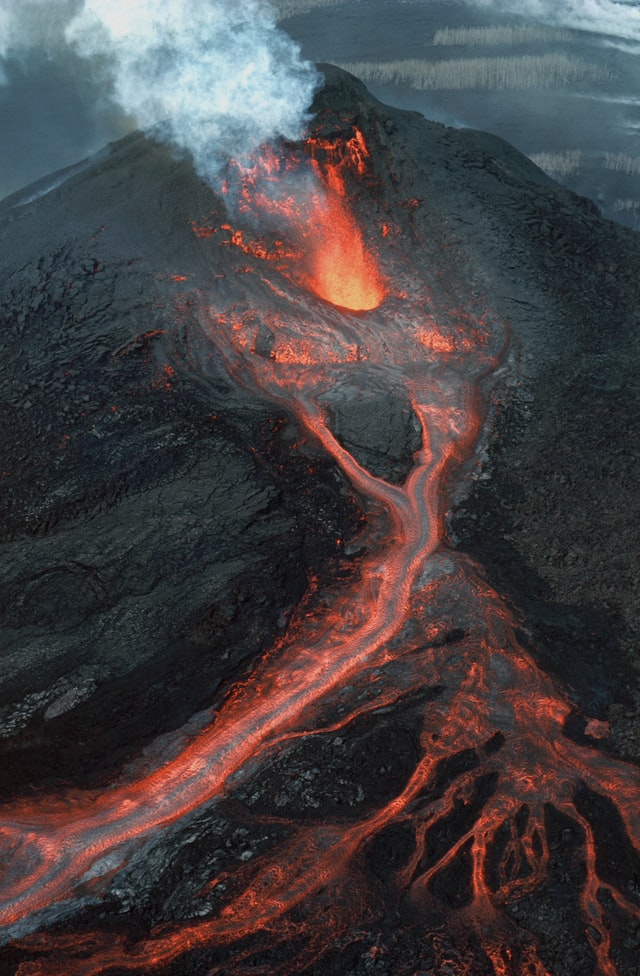
- Ethiopia’s lava lake located at the Erta Ale volcano is the most protracted globally as it was discovered in 1906 and still exists.
Nature and animals
- Ethiopia remains home to numerous endangered and rare animals and plant species. Unique to Ethiopia is the mountain Simien Jackal and Nyala. The nation is also known for its communities of gelada baboons and white and black colobus monkeys.
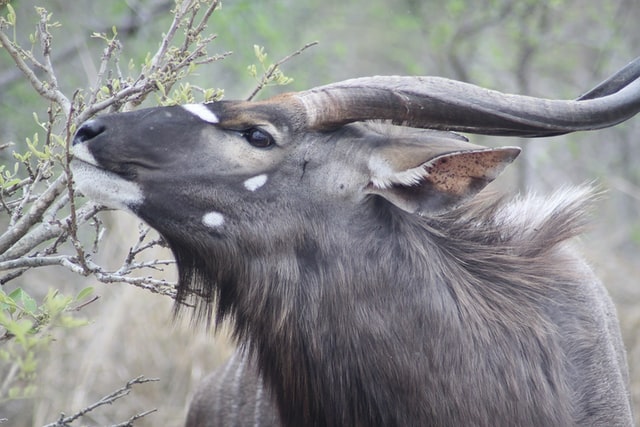
- Numerous antelope species, monkeys, and wild pigs roam freely in the lowlands. Furthermore, over 20 national parks and forest reserves where animals are protected in Ethiopia.
- The economy in Ethiopia is mainly driven by its nature, agriculture, and fisheries due to the favourable climate in different regions and the large number of rivers in the country.
Population and People
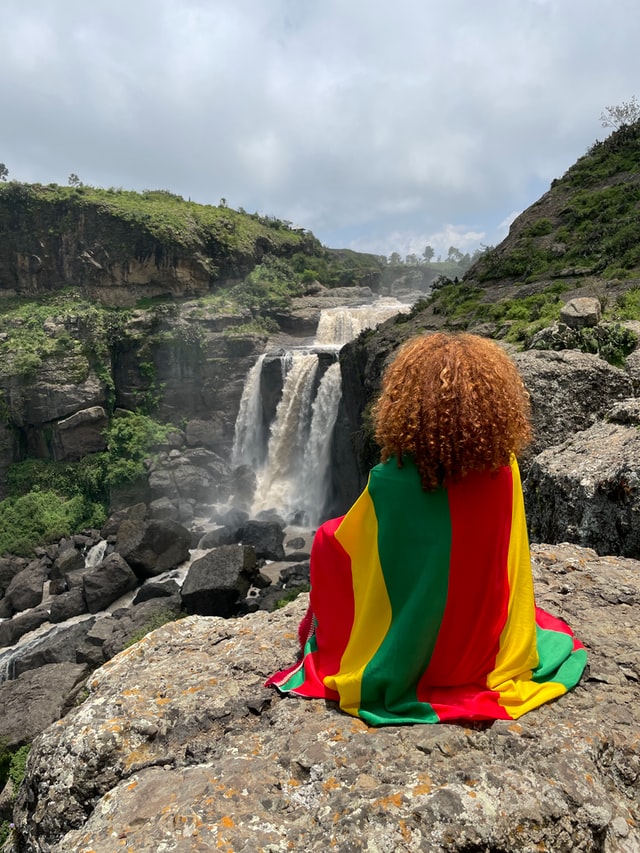
- Ethiopia is the second most populated nation in Africa after Nigeria. Most individuals reside in the highlands in the northern and western regions of the country.
- One in five Ethiopian residents live in urban regions, such as larger towns or capital cities. Most individuals reside in rural areas and work in agribusiness. Furthermore, the eastern regions of the nation are only sparsely inhabited. In rural places, many individuals live in traditional sheds.
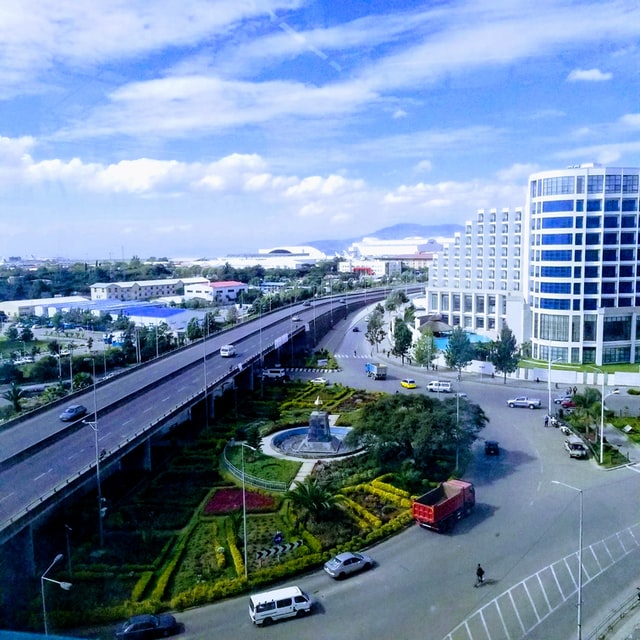
- People in Ethiopia are very religious, and most of them practice their religion devotedly. More than half of the inhabitants are Christians and mostly observe the Ethiopian orthodox church, one of the most ancient Christian churches worldwide.
- Although not as prevalent in Ethiopia, more than one-third of the inhabitants in the country follow Islam teachings. Most Muslims reside in the nation’s eastern lowlands, while most Christians reside in the northern highlands, but their impact is evident countrywide.
- Ethiopia has lately become one of the countries with the highest birth rates in the world. On average, a woman gives birth to around five kids. The nation thus has young inhabitants, and over 40% of all Ethiopian citizens are under 15 years old. The average life expectancy is approximately 50 years, and only one out of 20 individuals in the population is over 50 years!
- Only 4 out of 10 kids between 7 and 12 years go to school! When residing in a metropolitan city, kids usually get a more satisfactory education than most kids go to school. Nevertheless, children are less likely to access schools in rural locations or even obtain secondary schooling after primary school.
- Amharic is the primary working language in Ethiopia, as there is no official language. People in Ethiopia speak more than 80 languages, and local languages are oriented in schools and used in authorised communications.
Culture
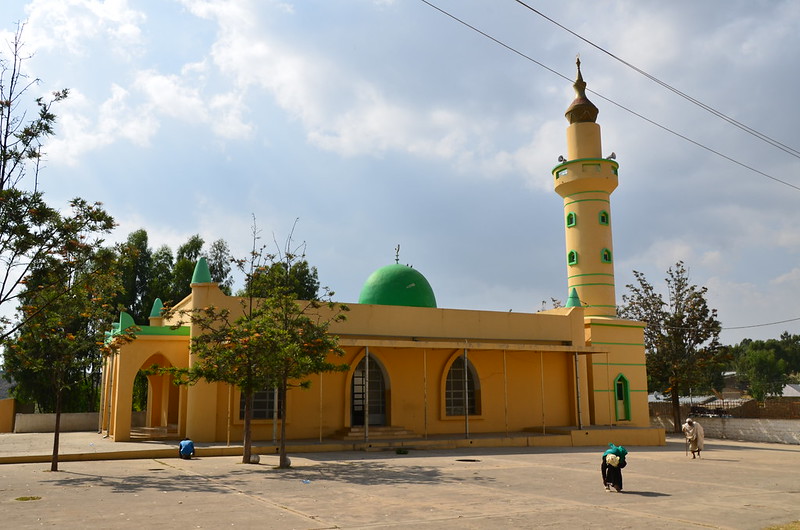
- Ethiopia was the first nation to accept the oppressed Muslim community from Mecca. Harar is considered the fourth divine city of Islam and has 100 shrines and more than 80 mosques.
Also Read: Islam In Africa
- The vast spectrum of ethnic groups is mirrored in the combination of the clothing worn in Ethiopia. The classic nationwide outfit for ladies is “habesha kemis.” It includes a long, colourful, white dress with gorgeous needlework and a matching shawl termed a “netela.” This attire has numerous variations, depending on the area and event. Men traditionally wear a white knee-length shirt with matching trousers and a “gabi,” a ribbon of weightless cloth adorned as a scarf.
- Ethiopian residents are well-known for their excellent hospitality, cordial welcome, and compassion for strangers. Unlike much of the world, driven by efficiency and active schedules, Ethiopian people prioritise society and companionship. In this ancient land, traditions are esteemed, and elders are shown admiration.
- Music and dance are strongly linked in Ethiopia and profoundly ingrained in their vibrant culture. There are numerous combinations of dance and song since there are many racial communities. Ethiopian music employs a pentatonic modal approach, with characteristically extended gaps between some music notes. Folk instruments comprise the “washint” (bamboo flute), “masenqo” (bowed lute), “kebero” (hand drum), and “krar” (lyre).
- Ethiopia is the land in Africa with the lowest income inequality. Nevertheless, it is still one of the most impoverished nations globally. It implies that although the difference in the percentage of wealthy and poor people in Ethiopia is limited, numerous individuals in the country live in extreme deprivation. This issue arises largely due to quick population expansion and natural catastrophes such as locust invasions and droughts impacting the livelihood of the inhabitants in the region.
Food
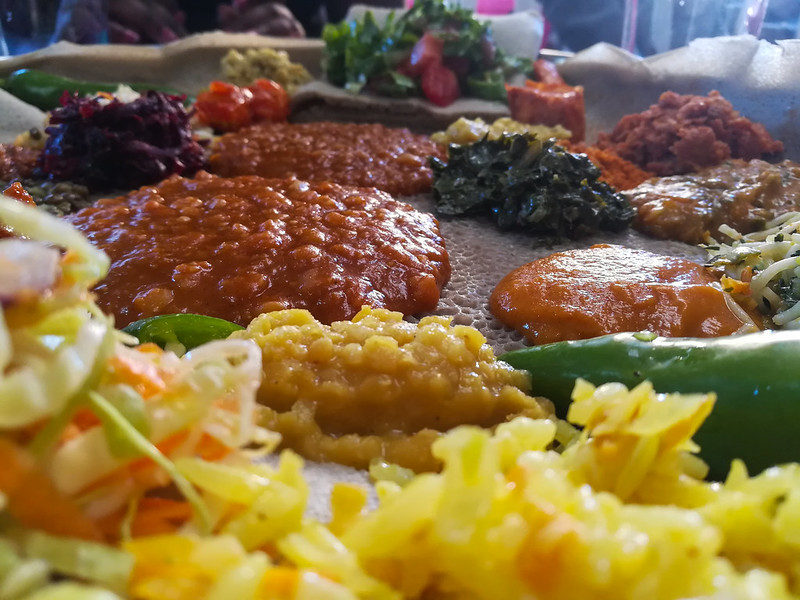
- Primary Ethiopian cuisines contain spicy meat stews, vegetables and sauces, and injera flatbread. Pulses like chickpeas, lentils, beans, or corn are standard in lamb, beef, and fish dishes. For religious grounds, pork is not consumed in Ethiopia.
- Injera is a spongy, soft flatbread used as a vessel and a utensil. It is produced from a little fermented teff batter, a millet variety. A combined platter is served with an injera base topped with beans, meat, and vegetable stews.
- Shiro is a lightly flavoured chickpea stew usually served on injera. Minced garlic, onions, and, depending upon regional variation, chopped tomatoes, ground ginger, and chilli peppers are added to the dish.
Economy
- While Ethiopia is one of the poorest nations worldwide, it is also one of the favourable countries due to transformations in the country’s administration and measures to fight poverty and increase the schooling levels in the nation.
- The Ethiopian economy is primarily driven by farming and fisheries due to the favourable climate in numerous areas and the abundance of rivers.
- Coffee is the most significant export yield of Ethiopia. Other exports comprise vegetables, oilseeds, and gold. In addition, the primary export partners of Ethiopia are Switzerland, Sudan, and China.

- Coffee was initially grown and produced on the productive plateau in the area around Harar in Eastern Ethiopia. Coffee was first exported from the country in the 15th century. Ethiopia is the largest coffee producer in Africa and the fifth-largest worldwide in recent times.
- Mining plays a prominent role in Ethiopia as well. The principal mining resources are tantalum and gold, a metal used in electronics. In addition, Ethiopia is also famous for rock salt and marble mining. The fuel used in Ethiopia is charcoal and firewood. Still, more and more hydroelectric energy stations are constructed, which also endanger the homes and normal lifestyle of the rural people.
- Ethiopian Airlines is the most extensive airline in Africa, with a fleet of 125 aeroplanes, the highest number of travellers, and destinations. Ethiopian Airlines is the globe’s fourth-largest airline, considering the number of nations an airline serves after Air France, Turkish Airlines, and British Airways. Furthermore, Ethiopian Airlines serves more nations than Lufthansa, Emirates, or American Airlines!
Government and Society
- Abiy Ahmed has been the Head of State or Prime Minister of Ethiopia since April 2018. On 11 October 2019, he was granted the Nobel Peace Prize.
- Ethiopia is one of the quickest developing economies in the world. In 2020, it was rated among the top-ranking African nations such as Tanzania, Rwanda, and Ghana in economic development.
- The President of Ethiopia or Chief of State is Zewde Sahle-Work, the sole female president in Africa! She was elected by parliament unanimously in 2018.
- Amharic, Somali, and Oromo are the most widely used regional languages. English is introduced as a primary foreign language in schools.
Also Read: Ancient Africa – Interesting Facts For Kids
Final words
With a vibrant history and an ever-growing economy, Ethiopia is undoubtedly on its way to becoming a self-sufficient nation in the near future. To read more interesting facts about Ethiopia, visit our website.
